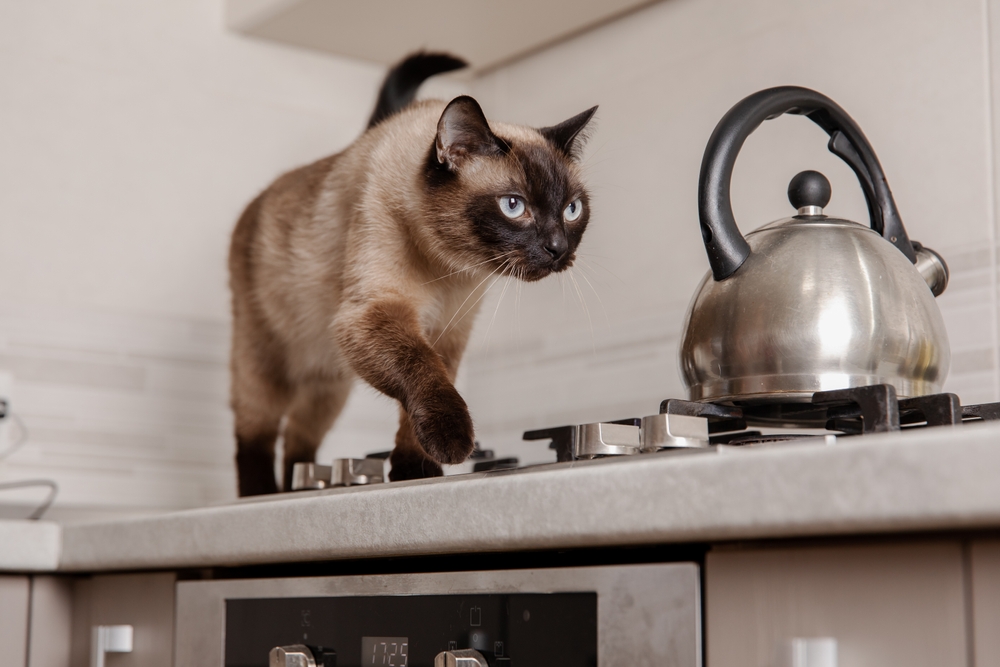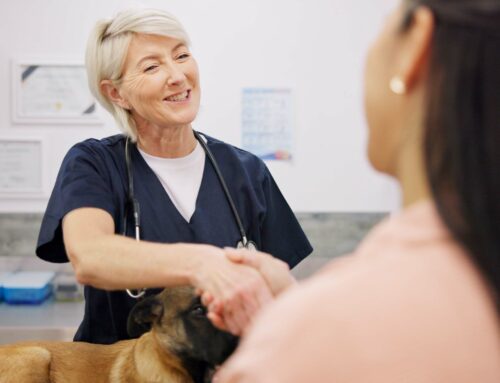Veterinary hospitals play a crucial role in educating pet owners about the dangers pets may face. Holiday hazards, heat, and cold are common topics, but what about lesser-known dangers? A pet’s curious nature makes them uniquely vulnerable to freak household accidents. Some accidents are genuinely impossible to predict or prevent, but knowing about unlikely risks can help pet owners take crucial precautions to reduce them. Here are some uncommon but critical hazards about which you should educate clients.
Pet hazard 1: Chip bags and food containers
Dogs and cats are naturally curious and attracted to food smells. A pet who investigates a chip bag or similar container by sticking their head inside can suffocate within minutes, leading to tragedy. Advise your clients to cut up discarded food bags before disposal and store snack foods in pet-proof containers.
Pet hazard 2: Swimming pools
Swimming pools can be as dangerous for pets as they are for children. A fall into a pool can lead to drowning, particularly if the pet is unable to climb out or if they panic and thrash in the water. Encourage pet owners to secure pools with fences or covers, install pet-safe ladders or ramps to help pets exit safely, and always supervise pets when near the pool.
Pet hazard 3: Electrical cords
Pets may chew on electrical cords and chargers, risking burns, shock, or death. Veterinary hospitals should recommend that clients use cord protectors, hide cords behind and under furniture, and provide pets with safe alternatives for chewing and playing.
Pet hazard 4: Grass and plant material
Many household and garden plants, including lilies, sago palms, and azaleas, are toxic to pets. Beyond toxicity, outdoor plants and grasses may contain sharp or barbed seed pods that can pierce a pet’s skin, eyes, or ears and migrate through their body. Instruct pet owners to check pets thoroughly for plant material embedded in fur and consult the ASPCA’s toxic plant list before decorating indoors.
Pet hazard 5: Sewing needles
Cats are attracted to string, yarn, and similar items, which may be attached to a sewing needle. Swallowed needles can penetrate the mouth, esophagus, or stomach and harm nearby vital organs. Inform pet owners never to underestimate their cat’s curiosity and keep these items out of reach.
Pet hazard 6: Trash cans
Trash cans often contain bones, spoiled food, or sharp objects, but pets who get into the trash don’t discriminate, and can develop “garbage gut” or an intestinal obstruction. Recommend that clients secure trash cans with pet-proof lids and keep them in inaccessible areas.
Pet hazard 7: Window screens and balconies
Falls from open windows or balconies, known as “high-rise syndrome,” can cause pets to be seriously injured or die. Cats may survive these falls, but dogs are less likely to walk away. Advise pet owners to ensure windows are securely screened, not allow pets to lean against screens, and avoid letting pets on open balconies unsupervised.
Pet hazard 8: Hot stoves

Cats often traverse countertops and tables and can accidentally jump onto a lit stovetop or hot pan. Worse, some pets could bump stove burners and cause gas leaks or fires. Pet owners should train cats to stay away from cooking appliances and remove knobs to prevent accidents while they are away.
General advice for preventing pet accidents
Pet owners can’t plan for every possible pet accident or injury, but you can advise them to take general precautions that safeguard pets from many dangers. Consider including the following strategies in your next educational blog or social post:
- Supervision — Emphasize the importance of supervising pets at all times, particularly puppies and kittens.
- Pet-proofing — Advise clients to pet-proof their homes, securing hazardous items and areas.
- Training — Recommend that pet owners teach their pets basic obedience training to help recall them away from danger or to teach them to avoid dangerous situations.
- Confinement — Training pets to feel comfortable while crated or otherwise confined keeps them out of trouble while pet owners are away.
Veterinary hospitals are vital in educating pet owners about lesser-known hazards and providing tips for helping pets stay safe in all situations. Raising awareness and providing practical advice can help prevent a tragic accident. If you need help writing a pet safety blog post or creating a social media calendar, contact the helpful Rumpus Writing and Editing team.








Leave A Comment